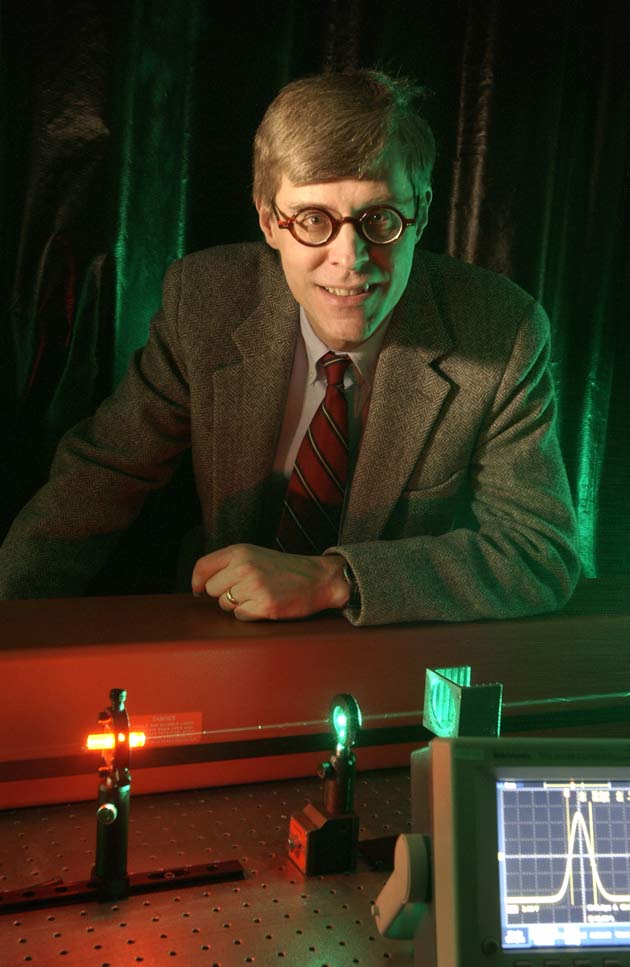Light Travels Backward and Faster than Light

It sounds nuts, but a scientist says his team has made light go backward. And this is not a simple trick of mirrors.
Previous work has slowed light to a crawl. But in the new research, a pulse of light is given a negative speed and—as if just to make your head spin—the researcher says the experiment made light appear to exceed its theoretical speed limit.
If you totally confused, don't worry. This reporter doesn't get it either. Nor do a lot of really smart scientists.
Follow along with a graphic or animation.
"I've had some of the world's experts scratching their heads over this one," says Robert Boyd, a professor of optics at the University of Rochester. "It's weird stuff."
See the video
The research was reported in the May 12 issue of the journal Science. Though not normally stated in news reports, Science is a peer-reviewed journal. That means some experts read Boyd's paper and said it was good to publish.
That said, nobody would blame you if you stop here. Otherwise, grab a couple aspirin, have a look at depictions of the experiment in this graphic or this animation, and read on.
Sign up for the Live Science daily newsletter now
Get the world’s most fascinating discoveries delivered straight to your inbox.
We're going to let Boyd do the explaining. And this next sentence is the crux of it all:
"We sent a pulse through an optical fiber, and before its peak even entered the fiber, it was exiting the other end. Through experiments we were able to see that the pulse inside the fiber was actually moving backward, linking the input and output pulses."
"The pulse of light is shaped like a hump with a peak and long leading and trailing edges. The leading edge carries with it all the information about the pulse and enters the fiber first. By the time the peak enters the fiber, the leading edge is already well ahead, exiting. From the information in that leading edge, the fiber essentially 'reconstructs' the pulse at the far end, sending one version out the fiber, and another backward toward the beginning of the fiber."
Faster than light
Let's put that another way, verbatim from a statement issued by the University of Rochester:
"As the pulse enters the material, a second pulse appears on the far end of the fiber and flows backward. The reversed pulse not only propagates backward, but it releases a forward pulse out the far end of the fiber. In this way, the pulse that enters the front of the fiber appears out the end almost instantly, apparently traveling faster than the regular speed of light."
What about Einstein, who said nothing can exceed light-speed?
"Einstein said information can't travel faster than light, and in this case, as with all fast-light experiments, no information is truly moving faster than light," Boyd said.
A spokesperson at the university's communications department added this: "Everything that defines the pulse that enters, also defines the pulse that exits. But the energy of the light does not travel faster than light."
Robert is an independent health and science journalist and writer based in Phoenix, Arizona. He is a former editor-in-chief of Live Science with over 20 years of experience as a reporter and editor. He has worked on websites such as Space.com and Tom's Guide, and is a contributor on Medium, covering how we age and how to optimize the mind and body through time. He has a journalism degree from Humboldt State University in California.










